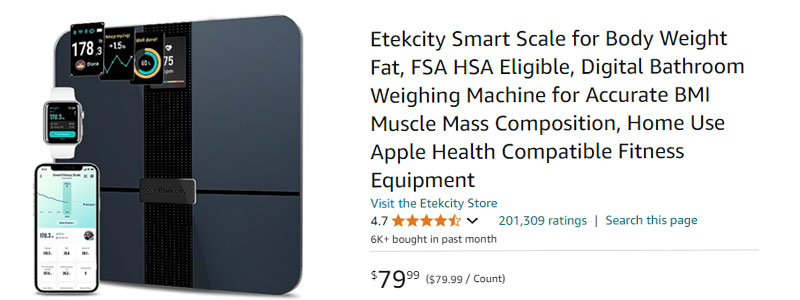Table of Contents
As Jessica gazed at the vast array of food options before her, she felt a familiar sense of overwhelming wash over her. Navigating the world of nutrition had always been a daunting task, leaving her questioning what truly constituted a “balanced” meal.
Today, though, something clicked. Jessica was dead set on fueling her body right and losing weight the healthy way. It was time to get real about building a balanced plate.
The Power of a Balanced Plate Fueling Your Body and Support Your Goals
In our fast-paced lives, we often find ourselves reaching for convenient, nutrient-poor options or falling into the trap of restrictive dieting. However, building a balanced plate doesn’t have to be complicated or restrictive. It’s about nourishing your body with the right combination of nutrients to support optimal health, energy levels, and weight management goals.

Understanding the Components of a Balanced Plate
A truly balanced plate should consist of a variety of nutrient-dense foods from different food groups, each playing a crucial role in your overall well-being.
- Protein: Lean proteins, such as chicken, fish, eggs, or plant-based sources like legumes and tofu, are essential for building and repairing tissues, supporting muscle growth, and promoting satiety.
- Whole Grains: Choose nutrient-rich whole grains like quinoa, brown rice, or whole-wheat bread, which provide fiber, B vitamins, and sustained energy.
- Fruits and Vegetables: Aim to fill half your plate with a vibrant array of fruits and veggies, which are packed with essential vitamins, minerals, antioxidants, and fiber.
- Healthy Fats: Don’t fear fats! Include moderate portions of unsaturated fats like avocado, nuts, seeds, and olive oil, which support heart health, brain function, and nutrient absorption.
For a visual guide on building a balanced plate, check out this resource from the Harvard School of Public Health.
While the components of a balanced plate are crucial, portion control and mindful eating habits are equally important for achieving your weight loss goals.
Aim for a balanced distribution of macronutrients (protein, carbohydrates, and healthy fats) at each meal, with lean protein and fiber-rich vegetables taking up the largest portions of your plate. Practicing mindful eating can also enhance your relationship with food and help you recognize hunger and satiety cues.
According to a study published in the Journal of the American Dietetic Association, individuals who practiced mindful eating were more likely to maintain a healthy weight and develop a positive relationship with food.
Meal Planning and Preparation
One of the keys to consistently building balanced plates is meal planning and preparation. By dedicating some time each week to plan your meals and prepare ingredients in advance, you can streamline the process and reduce the temptation to reach for less nutritious options.
Need inspiration for balanced meal ideas? Check out these recipes from EatingWell.
Flexibility and Balance
It’s important to remember that building a balanced plate is a flexible concept that can be adapted to suit your individual preferences, dietary restrictions, and lifestyle. The key is to focus on nutrient-dense whole foods and balance the macronutrient distribution to support your health and weight goals.
For more tips on building a balanced plate, check out this guide from the Academy of Nutrition and Dietetics.

7 Essential Tips for Building a Balanced Plate
- Fill Half with Fruits and Veggies: Aim to make at least half of your plate a vibrant array of fruits and vegetables in every shade of the rainbow. Not only are they loaded with essential vitamins, minerals, antioxidants, and fiber, but their water and nutrient density add volume to your plate while being low in calories. Incorporate a mix of leafy greens, crunchy veggies, and fresh or baked fruits to maximize nutrient variety and satisfaction.
- Include Lean Protein: Lean protein sources should take up about a quarter of your plate. Opt for lean cuts of chicken, turkey, or fish, or plant-based options like tofu, tempeh, lentils, or beans. A palm-sized portion (around 3-4 ounces) is usually sufficient to support muscle growth, promote satiety, and stabilize blood sugar levels. Rotate through different protein sources to ensure you’re getting a variety of nutrients.
- Choose Whole Grains: Another quarter of your plate should be dedicated to nutrient-rich whole grains like quinoa, brown or wild rice, whole-wheat pasta, or whole-grain bread. Whole grains provide complex carbohydrates for sustained energy, as well as fiber to promote feelings of fullness. Experiment with different varieties to add texture and flavor to your meals.
- Don’t Fear Healthy Fats: While portions should be moderate, don’t neglect healthy fats like avocado, nuts, seeds, olive oil, or fatty fish like salmon. These unsaturated fats are essential for heart health, brain function, and the absorption of fat-soluble vitamins. Aim for a thumb-sized portion (around 1-2 tablespoons) of plant-based fats or a palm-sized portion of fatty fish.
- Practice Portion Control: Building a balanced plate isn’t just about the types of foods you include – portion sizes are equally important. Use visual cues like your hand to gauge appropriate portions, and be mindful of hunger and satiety cues. Aim for a balanced distribution of macronutrients (protein, carbs, and healthy fats) at each meal to keep you feeling energized and satisfied.
- Meal Prep for Success: Plan your meals and prepare ingredients in advance to streamline the process and reduce the temptation for less nutritious options.
- Embrace Flexibility: While these tips provide a solid framework, remember that building a balanced plate is a flexible concept that can be adapted to suit your individual preferences, dietary restrictions, and lifestyle. Don’t be afraid to get creative and experiment with different flavor combinations and ingredients that align with your nutritional needs and personal tastes.
By incorporating these 7 essential tips, you’ll be well on your way to consistently building balanced plates that nourish your body, support your weight loss goals, and promote overall well-being. What balanced meal will you create next?

Frequently Asked Questions About Building a Balanced Plate
Why is it important to build a balanced plate?
Building a balanced plate ensures you’re consuming a variety of nutrient-dense foods from different food groups, which is essential for optimal health, energy levels, and weight management.
What are the components of a balanced plate?
A balanced plate should include lean protein, whole grains, fruits and vegetables, and healthy fats like avocado, nuts, and olive oil.
How do I determine the right portion sizes for a balanced plate?
As a general guideline, aim for a palm-sized portion of lean protein, a fist-sized portion of whole grains, and at least half your plate filled with fruits and vegetables. You can include as well reasonable portions of healthy fats.
Can a balanced plate help with weight loss?
Yes, building a balanced plate with nutrient-dense, high-fiber foods and controlling portion sizes can support healthy weight loss by promoting satiety and providing essential nutrients.
Is meal planning and preparation necessary for building balanced plates?
While not strictly necessary, meal planning and preparation can make it easier to consistently build balanced plates by having ingredients on hand and reducing the temptation for less nutritious options.
How often should I plan and build a balanced plate?
It’s recommended to build a balanced plate for each main meal (breakfast, lunch, and dinner) to ensure you’re meeting your nutritional needs throughout the day.
Can I indulge in less nutritious foods while still building a balanced plate?
Moderation is key. While it’s okay to indulge occasionally, focus on building balanced plates with nutrient-dense, whole foods for most of your meals to support your overall health and weight goals.
Was this Article Helpful?
We hope that you found this article helpful and informative. We are always striving to provide you with the best content and resources for your weight loss control goals. We would love to hear from you and get your feedback and suggestions.
Please visit our Facebook page and leave us a comment or a message. Tell us what you liked or disliked about this article, what you learned or want to learn more about, and what you want us to write about next.
Your input is very valuable to us and helps us improve our work. Thank you for reading and supporting us.
#balancedplate #weightloss #nutrition #healthyeating #portioncontrol #mealprep #wholefood #macronutrients #mindfulness #flexiblediet













